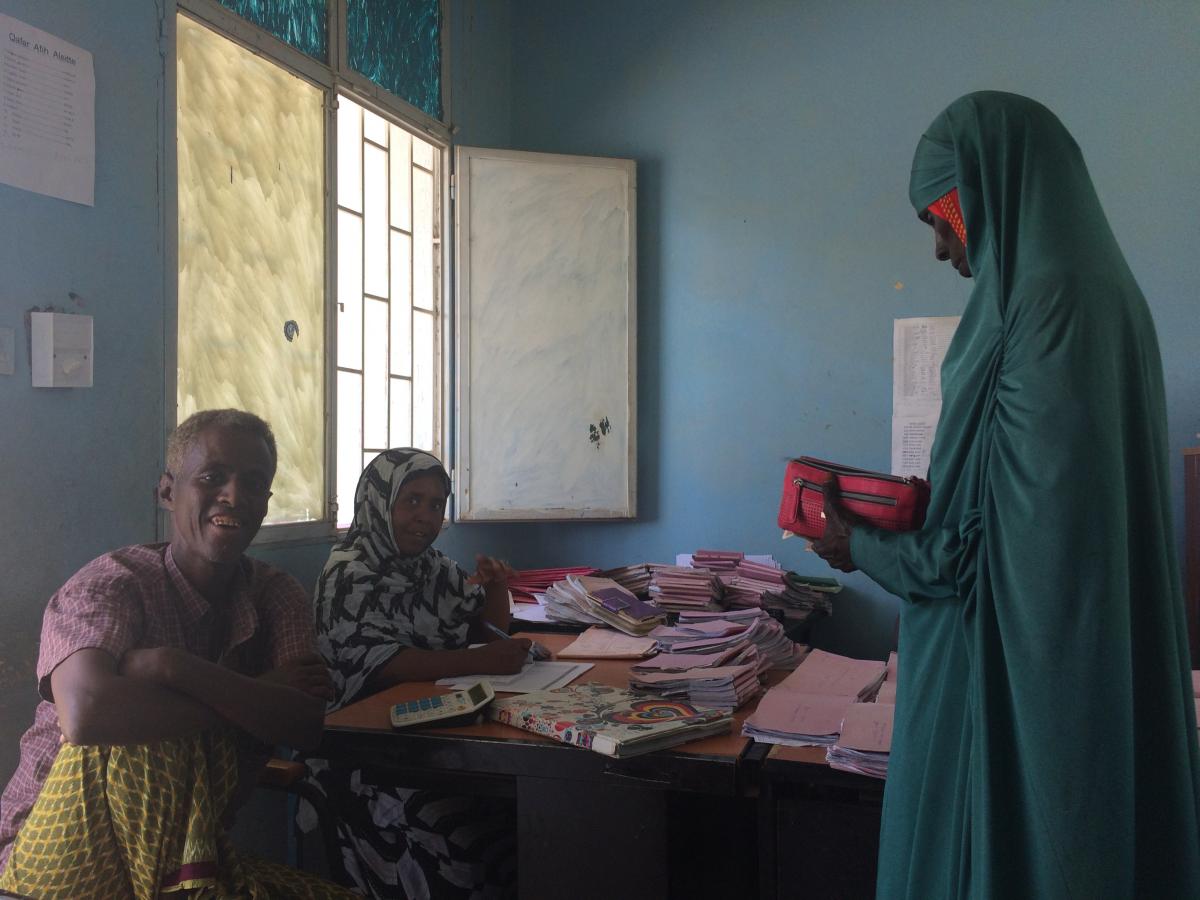A new guideline seeks to professionalise the management of multi-village water supplies in Ethiopia
Published on: 19/04/2018

Most rural water supply facilities in Ethiopia are managed by voluntary committees known as WASHCOs. The arrangement can work well for simple technologies like a well with handpump, but as the Government of Ethiopia and the Sustainable Development Goal (SDG) targets of "safely managed water" begin to require better services, water supply technologies are becoming more complex. Piped schemes serving one or more villages are currently being more widely promoted and developed in areas with complex hydrogeology, and the range of pumping technologies used takes in new options like solar power. In one small town in Ethiopia, even a desalination plant is being run by a WASHCO (see our blog from Afdera). All these schemes are designed to reduced the need for emergency water trucking by investing in resilient longer term water supplies.
As rural African economies develop and populations become more mobile with skilled people moving out to urban centres, such voluntary community structures are increasingly considered inappropriate for the higher level technologies, and especially for multi-village piped schemes, but what is the alternative?
Towns, which are rapidly increasing in number and population across the country, have piped water supplies managed by public utilities. Although not without their problems - no utilities are yet considered to recover all their costs outside of the capital Addis Ababa - these employ professional managerial and technical staff to run the enterprise. Water supplied is metered and charged to customers. Private companies and service providers can be hired by the utility when needed. A board provides oversight seeking to ensure the utility does a good job.
With a nod to these arrangements, the launch by MoWIE, the Ministry of Water, Irrigation and Electricity, of a new guideline for Rural Public Utilities for multi-village water supply seeks to fill the gap between community management of simple point sources and full urban utility management. This seeks to retain an appropriate level of community participation but at the same time bring in the professionalisation needed to deal with more complex rural water supply schemes.
At a sensitisation workshop in Addis Ababa to roll out the ideas from 8-9 March 2018, Tamene Hailu, rural water supply coordinator at MoWIE, the Ministry of Water, Irrigation and Electricity, highlighted the national importance of not only building but effectively operating and maintaining new multi-village piped water supply schemes. There are good examples on which to build in places like Hetosa, Robe Meliu, Siraro, and Dalocha (in Oromia and SNNP regions) and the guidelines are intended to help scale up the better arrangements and practices to new schemes as they are constructed. Many of these initiatives have been supported by NGOs and still require a more "professionalised" approach.
The initial roll out of the manual is planned in Afar, Somali and Amhara, and other regions are expected to follow. These first three are all regions where government, UNICEF (who alone have supported almost 100 new multi-village schemes in the past 3 years in Ethiopia) and other development partners have been investing in new "climate resilient" multi-village schemes. The schemes supply up to 50,000 households in some cases with water piped as far as 300 kilometres. Such schemes are considered to be more climate resilient as they are designed to supply water throughout the year as well as suited to address other critical problems like fluoride contamination by conveying water from safe and reliable sources over long distances.
A major failure of a new multi-village scheme, upon which local communities in drought-prone communities are often dependent, could be catastrophic. So strengthening their management is such a high national priority. Recognising this, UNICEF and partners have introduced several new ideas in the manual, building on priorities in the Growth and Transformation Plan II. These include: a new regulatory organisation; a capital maintenance fund; full metering with pro-poor tariffs; improved accountability; and making asset management central including related initiatives in monitoring maintenance, and replacement.
The new rural public utilities are expected to look similar to existing town water utilities although there are some differences. Rural public utilities may manage multiple schemes across wider areas than more urban utilities. As well as clustering, another option is linking to existing town water utilities.
There will undoubtedly be challenges as the rural public utility model is rolled out. Few NGO organisations have the capacity needed to support the development of new utilities. There are questions about gaps in existing regulations especially in Afar and Somali region. And most critically, will rural public utilities be able to cover their operation and maintenance costs as intended? The approach needs to be tested and carefully monitored to learn from the practice.
Over the next few months the model will be further considered through regional workshops and the first rural public utilities set up under the manual. It's a big and critical task of national importance with many questions to be answered and much for organisations to learn. There is no time to lose.
At IRC we have strong opinions and we value honest and frank discussion, so you won't be surprised to hear that not all the opinions on this site represent our official policy.